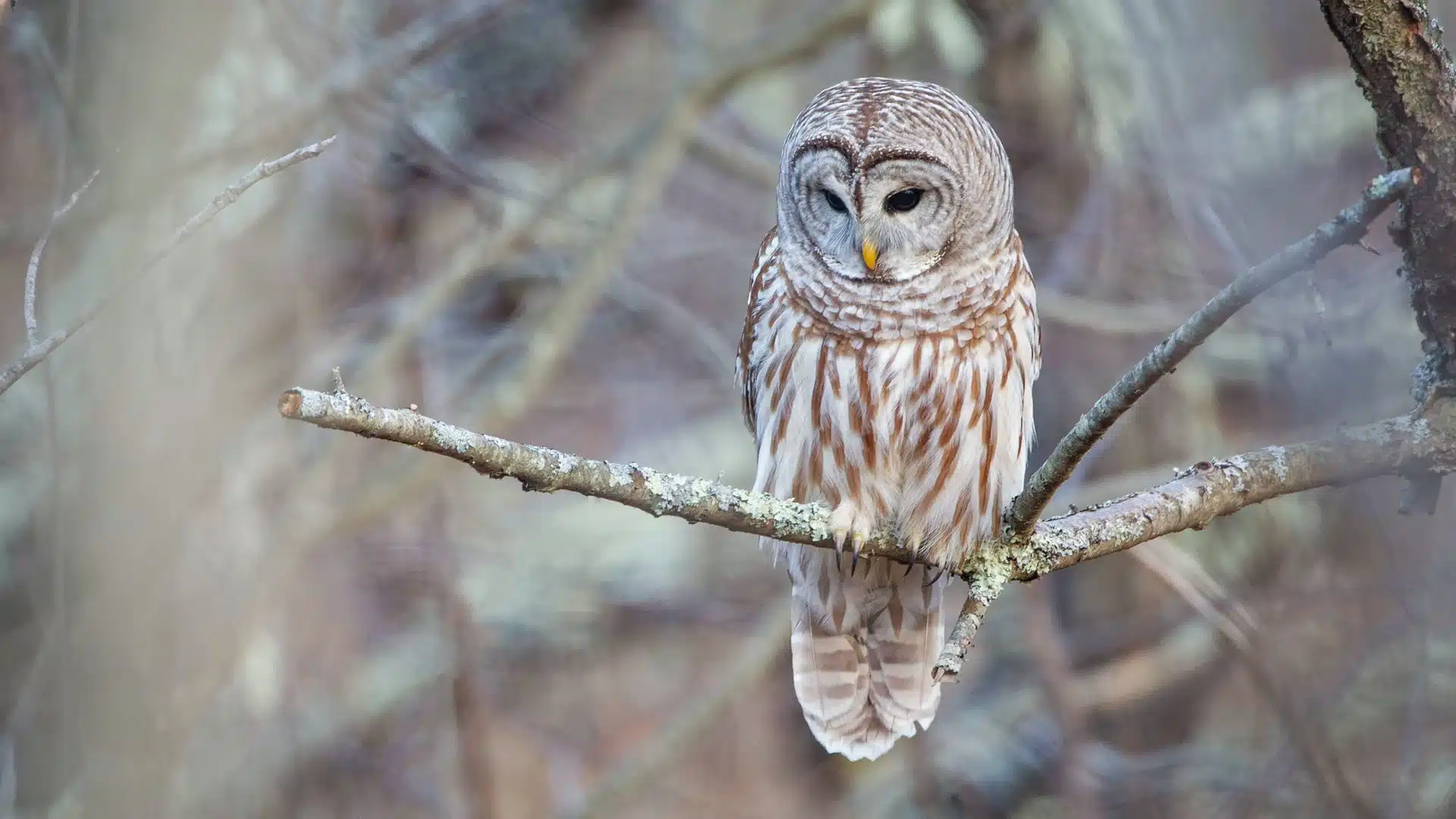Birds
Barred Owl
Strix varia

Voice: 8–9 notes, described as “Who cooks for you? Who cooks for you-all?”
Traditionally known as the “swamp owl,” the barred owl is an inhabitant unbroken oldgrowth wet forests. Barred owls don’t migrate or move from their old forest growth
habitat with plenty of cavity trees near swamps, streams and lakes. The dominate trees of
the barred owls habitat include hemlock (tsuga), maple (acer), oak (quercus), hickory
(carya), sycamore (platanus) and beech (fagus).
Barred owls are primarily nocturnal. Their flying wing beats are slow with occasional
glides. Their soft feathers and serrated edge outer wing feathers enable them to minimize
noise and surprise their prey. Prey includes small animals, including birds, amphibians,
reptiles, squirrels, chipmunks, mice, voles, rabbits and invertebrates. Barred owls even
wade in shallow water in pursuit crayfish or fish. They swallow small prey whole and eat
large prey by tearing it into pieces, eating the head first and then the body.
Breeding season begins in late December in the south to mid-march in the north.
However barred owls may scout a nest site as early as a year before using it. They usually
nest in a natural cavity 20–40 feet high in a tree. On occasion they will use abandon nests
of squirrels and large birds such as hawks or crows. Cavities nests are unlined and
measure 10–13 inches wide and 14–21 inches deep. Non cavity nest maybe flattened and
lined with lichen and fresh conifer shoots.
Female barred owls incubate 2-3 smooth white eggs for 22-33 days. Young hatchlings
have no sight until 7 days. Nestlings are tended to by both parents. Young leave the nest
at 4-5 weeks. Until the six week when the young can fly they climb trees by grasping on
the bark with their bill and talons, flap their wings and walking their way up trunks.
Parents care for their young beyond 4 months.
Barred owl populations have increased 1.7 percent per year between 1966 and 2010,
according to the North American Breeding Bird Survey. Since barred owls are forest
birds, they are often used as indicator species for managing old forest. They need large
trees for nest sites which make them sensitive to logging and development. Besides
humans, great horned owls are the most serious predatory threat to the barred owls.
Best Location to View: A stocky, large, dark-eyed owl. White allover with gray-brown vertical bars on neck and breast and streaks on belly; no ear tufts
Range: Year Round Resident British Columbia, Alberta, Quebec, and Nova Scotia south to northern California and throughout East to Texas and Florida
Size: 17-24"
Wingspan: 3.5-4'




